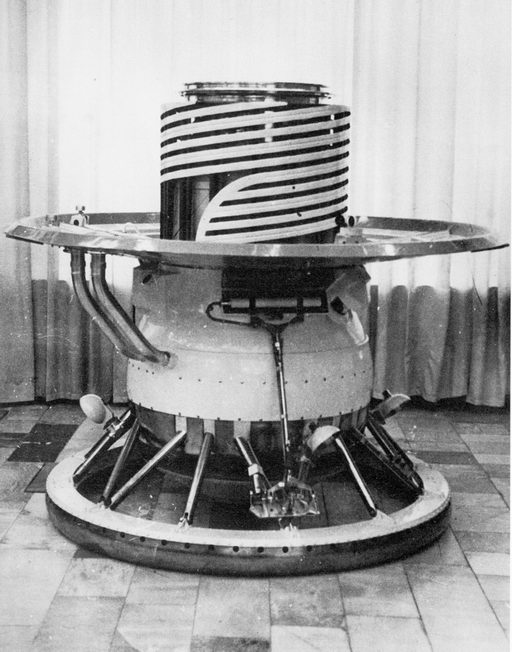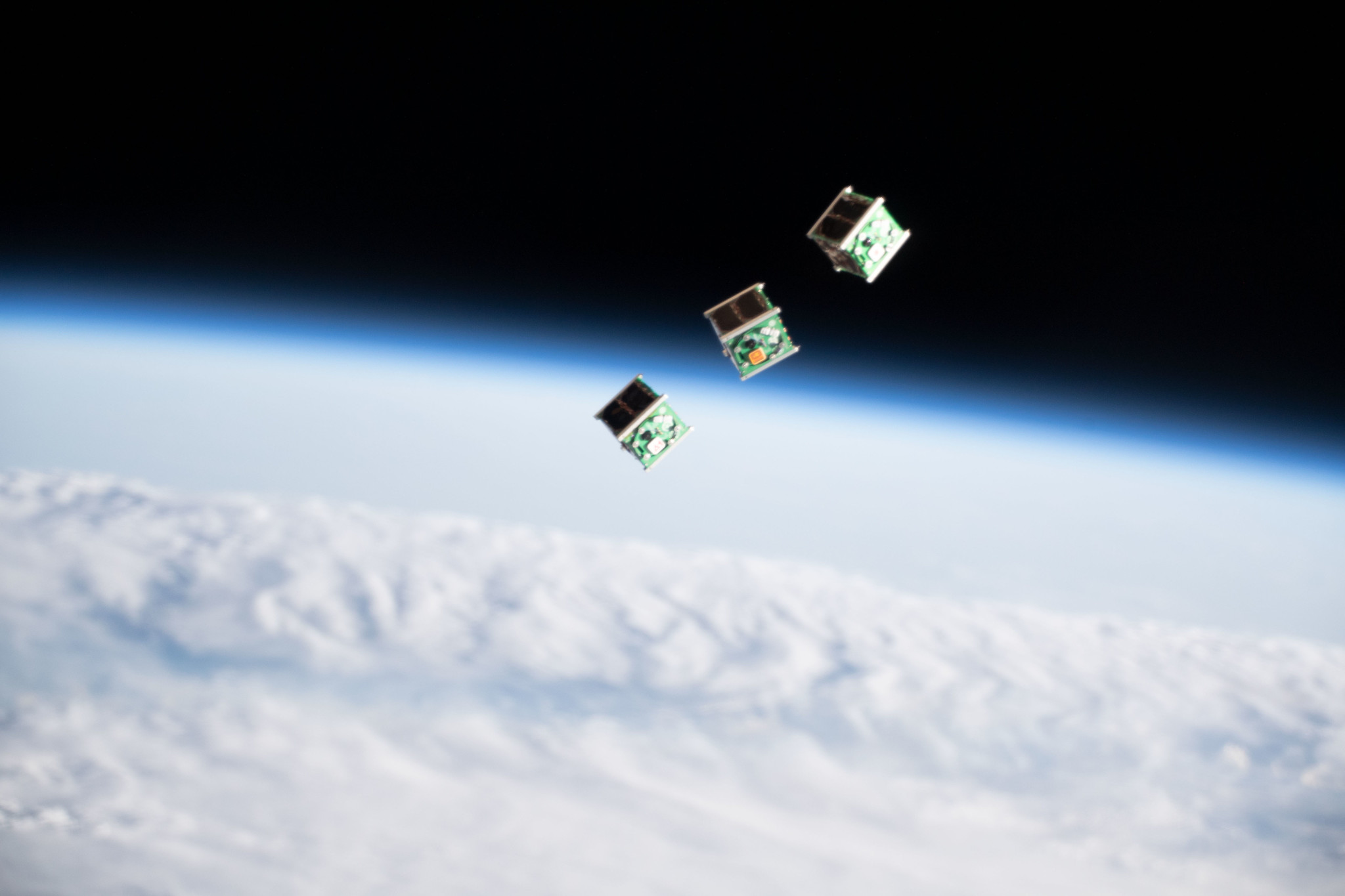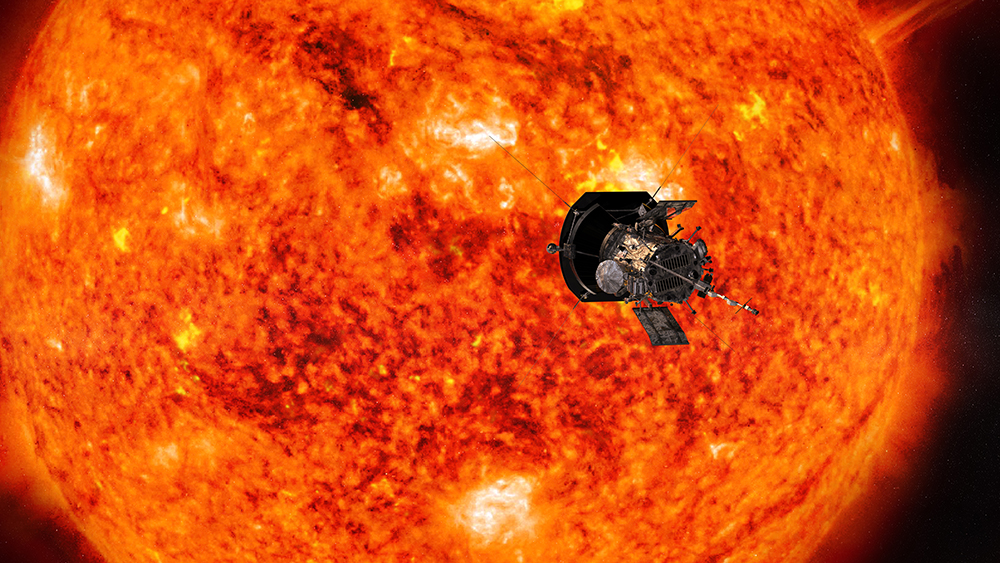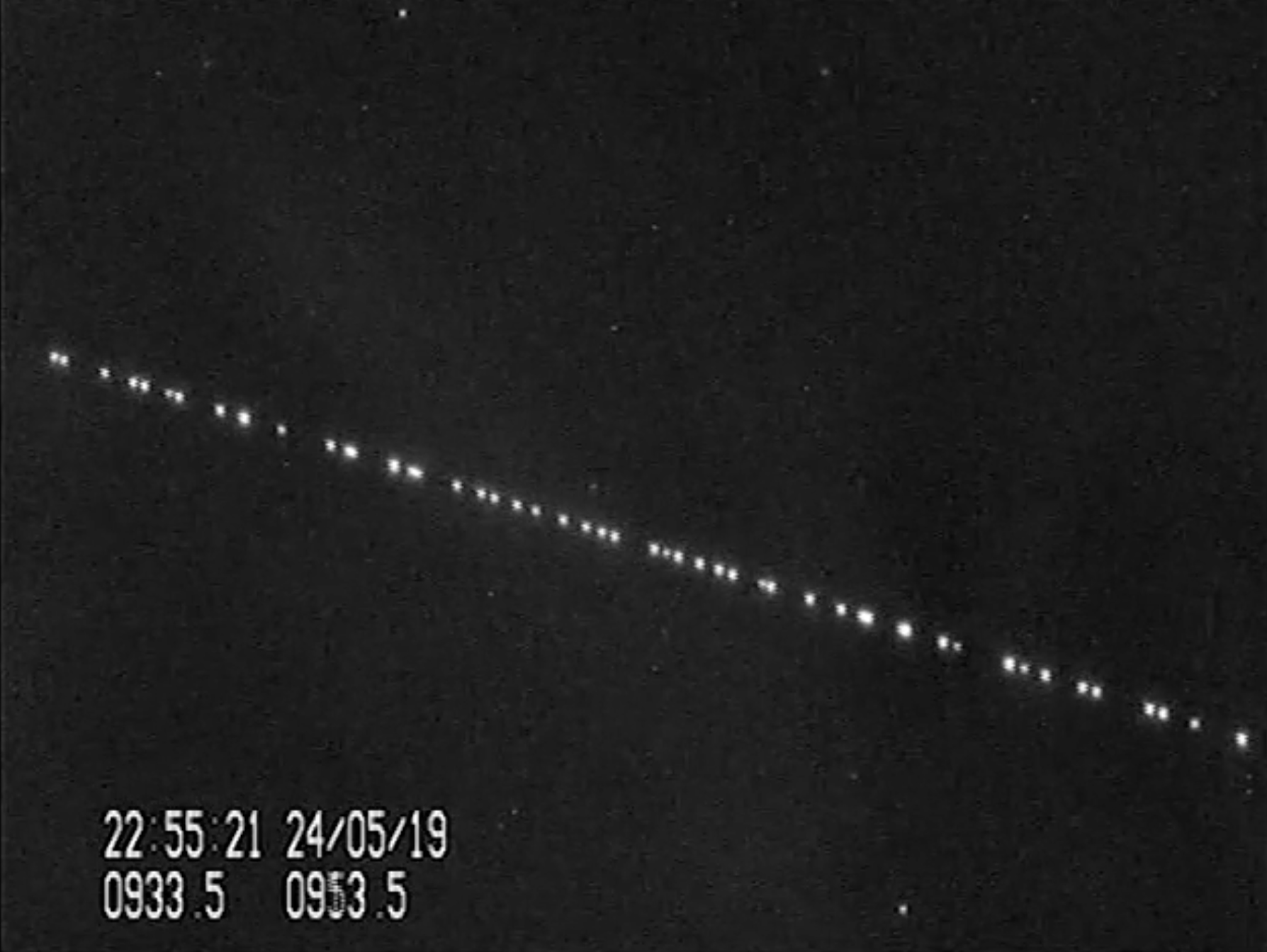The most historic satellites ever launched

The first artificial satellite flew into space in 1957, changing life on Earth forever. Before long, we depended on satellites for weather forecasts and telecommunications. Today, fleets of satellites are flying into space for applications like broadband or Earth imaging.
As our skies get more crowded with satellite constellations, engineers must deal with issues such as orbital debris and satellite trails that interfere with astronomical observations. These problems won't be solved overnight. But in the meantime, this slideshow celebrates some of the good things satellites have done for humanity by highlighting the most historic orbiting satellite trailblazers that revealed secrets of the solar system.
Related: World Space Week 2020 celebrates satellite technology. How to watch.

First Earth satellite: Sputnik (1957)
Sputnik, more officially known as Sputnik 1, was the first artificial satellite to safely make it into Earth orbit. The Soviet Union launched it in secret on Oct. 4, 1957, from the Baikonur Cosmodrome in Kazakhstan, the same location where Russia launches crews to the International Space Station nowadays.
While in space, Sputnik gathered data on the density of the upper layers of Earth's atmosphere and measured how well radio signals transmit in the ionosphere, a layer in the upper atmosphere that is full of charged particles. Space observers commonly say that the surprise of Sputnik spurred the United States to engage in a space race to send satellites — and eventually, astronauts — into orbit to show the merits of democracy over communism.

First U.S. satellite of Earth: Explorer 1 (1958)
The United States made two attempts to send a satellite into space after the Soviet Union's Sputnik. The first effort failed, but Explorer 1 successfully flew into space on Jan. 31, 1958.
Explorer 1 is best remembered for confirming zones of charged particles trapping radiation in the magnetosphere of Earth, called the Van Allen belts. The belts have remained continued objects of investigation across space missions ever since, to better understand how they fluctuate with space weather — the interaction of the sun's activity with the Earth's sphere of influence.
Related: Explorer 1: How the first American satellite worked (infographic)

First satellite to image Earth: Explorer 6 (1959)
The main mission of NASA's Explorer 6 satellite, which launched on Aug. 7, 1959, was to study radiation trapped in Earth's upper atmosphere, and to determine how often micrometeorites penetrate our atmosphere and the area near our planet.
But a valuable side mission saw the satellite take the first image of Earth from space on Aug. 14, 1959, over Mexico. The image, although low-resolution by today's standards, demonstrated the potential of using space machines to take pictures of our planet. Today we commonly use Earth observation satellites to image the surface and atmosphere in many wavelengths of light to track phenomena such as climate change, agricultural yield or natural disasters.

First passive satellite communications experiment: Echo I (1960)
Echo 1 was the first experiment to try passive communications from orbit. The spacecraft was a balloon made of Mylar polyester film that could reflect microwave signals. The satellite was tested for transcontinental and intercontinental telephone, radio and television signals.
While Echo 1 and its successor Echo 2 worked well, NASA elected to focus on active communications technology. Still, the "sateloons" spurred research into inflatable structures that led to applications like the Bigelow Aerospace module now attached to the International Space Station.

First satellite to study weather: TIROS 1 (1960)
NASA's TIROS 1 (Television and Infrared Observation Satellite) launched on April 1, 1960 on a test mission to see how well satellites could send TV pictures from space to Earth to observe the weather.
The satellite had two cameras, a wide angle one and a narrow angle one, to take pictures of cloud cover over Earth. Today, most of our weather forecasts come from satellites that constantly gaze at the Earth from geosynchronous orbit, although more small satellites in low Earth orbit are supplementing those observations. TIROS also ushered in satellites devoted to TV broadcasting, starting with Telstar in 1962.

First satellite with a human on board: Vostok 1 (1961)
Soviet cosmonaut Yuri Gagarin became the first person to fly in space on April 12, 1961, achieving three orbits before returning to Earth. This milestone is celebrated worldwide as "Yuri's Night" every year on the anniversary of his flight.
At the time of his flight, Gagarin's mission was seen in the context of the space race between the United States and the Soviet Union. Decades on, however, the mission represents the day that space opened up to humans — humans that eventually participated from numerous countries around the world. More than 500 people have now flown into space, and this number could expand quickly when private space companies begin sending paying customers aloft.

First spacecraft to orbit the moon: Luna 10 (1966)
The Soviet Union's Luna 10 achieved two major milestones in 1966, becoming the first satellite to orbit anybody but Earth — and also becoming the first satellite to orbit the moon.
The spacecraft measured the moon's magnetic field, radiation environment, gravity field and other metrics. A gamma ray spectrometer gathered compositional information about the moon's surface, showing a lot of basalt.
Only two years later, in late 1968, the first satellite (spacecraft) with humans on board orbited the moon — NASA's Apollo 8. The first human moon landing, Apollo 11, followed on July 20, 1969.

First spacecraft to orbit Mars: Mariner 9 (1971)
NASA's Mariner 9 mission was originally supposed to be part of a two-spacecraft set orbiting Mars, but Mariner 8 never made it into space. Mariner 9 succeeded and arrived safely to Mars orbit on Nov. 14, 1971, making it the first spacecraft to orbit another planet. Mariner 9 carried out the mission objectives of both spacecraft, mapping 70% of the Martian surface and studying changes on the surface and in the atmosphere.
Mariner 9's imaging was delayed by a huge Martian sandstorm that obscured most of the surface, but when the dust died down, it sent the first images of Red Planet volcanoes and the huge Valles Marineris (a canyon) back to Earth. Mariner 9 showed that Mars was a dynamic planet and helped spur further investigations into searching for signs of life, which many Red Planet spacecraft continue to do today.
Related: Here's what a volcano on Mars looked like to Mariner 9 in 1971

Longest running Earth-observing program: Landsat (1972-present)
In 1972, the United States' first multi-agency Earth Resources Technology Satellite, ERTS-A, launched with a mission of examining the Earth's landmass over a long period of time. It carried a camera and a multispectral scanner that showed the Earth's surface in different wavelengths of light. Later on, the mission was retroactively named Landsat 1 and heralded the beginning of a long series of Earth-gazing satellites devoted to learning more about our planet.
The Landsat series is now the longest-running Earth observation program and is about to enter its sixth decade of observations across multiple satellites. Having a consistent set of information on hand from Landsat's many satellites is crucial to letting scientists understand how the Earth's surface has changed due to factors such as glacier melting, urbanization and desertification.
Related: Landsat Photos: Most Beautiful 'Earth as Art' Images

First satellite to orbit Venus: Venera 9 (1975)
The Soviet Venera 9 mission was an orbiter-lander pair designed to follow up on other spacecraft that made brief flybys of Venus, or made suicide plunges towards the planet's surface to learn more about its atmosphere. Venera 9 was the first mission to put a spacecraft in orbit around Venus, and it also sent the first lander to the planet's surface. This began a series of Soviet spacecraft that landed upon or orbited Venus to learn more about the planet's surface, atmosphere and geology.
Periodic studies of Venus by other nations continued in the decades afterwards. While the planet's surface features oven-like temperatures and high pressures fueled by volcanism, studies of the high atmosphere show a more temperate environment. Phosphine, a molecule that can be associated with life (but not always), was detected in the atmosphere in results announced in 2020.

First satellite in Lagrange orbit: ISEE-3 (1978)
NASA's International Sun-Earth Explorer 3 (ISEE-3) became the first spacecraft to be placed at a Lagrangian point in space in 1978. Lagrangian points are relatively stable locations in space where the forces of two worlds' gravity balance each other out, such as ISEE-3's location at L1 between the sun and the moon. Such locations allow spacecraft to use a minimum of fuel and to avoid interference from Earth's atmosphere.
ISEE-3's mission was to study space weather, the solar wind and other phenomena associated with the sun, and later on it pivoted to other science such as comet studies. The spacecraft was shut off in 1997, but resurrected briefly through a private effort in 2014. ISEE-3 is part of a long series of spacecraft seeking to better understand the nature of the sun, which has a large influence on Earth's weather and climate.
Related: NASA's vintage ISEE-3 spacecraft in pictures (gallery)

Most influential orbiting telescope: Hubble Space Telescope (1990)
The Hubble Space Telescope is not the first space telescope in orbit — that distinction belongs to the joint U.S.-United Kingdom Ariel 1 in 1962 — but its launch in 1990 heralded a new era in space outreach and long-term studies for NASA and the European Space Agency.
Hubble launched with myopia caused by a malformed mirror, a problem that was corrected by astronauts during a servicing mission in 1993. Afterwards, the telescope delivered a series of iconic images that graced school textbooks and the early Internet, such as the "Pillars of Creation" in the Eagle Nebula. Its scientific impact includes a team of its scientists receiving a Nobel Prize in 2011 for work showing the expansion of the universe is accelerating. After several astronaut missions, Hubble remains in good health and is expected to continue work in the 2020s and perhaps beyond.
Related: The best Hubble Space Telescope images of all time!

First satellite to orbit Jupiter: Galileo (1995)
The Galileo mission arrived at Jupiter in 1995 and was the first orbiting mission there, after a few flybys by other spacecraft. It had goals of better understanding the physical properties and geological history of the planet and its numerous moons. It sent a descent probe into Jupiter early in its mission to reveal more about the atmosphere to scientists. Galileo then spent the next eight years doing periodic flybys of Jupiter's moons, including numerous icy moons such as Europa that may be habitable.
The orbiter remained productive until 2003, when engineers sent the spacecraft deliberately into the atmosphere of Jupiter to protect it from accidentally crashing into and contaminating a moon. Scientists continue to study icy moons for their potential for life, and for understanding where the Earth's water came from.

Longest crewed satellite: International Space Station (1998-present)
The International Space Station (ISS) launched in 1998 to provide a long-term microgravity platform to study how the human body changes in space, typically for missions of six months (although some have lasted close to a year.) The ISS builds on numerous space stations before it, starting with the Soviet Union's Salyut 1 in 1971 and including research from facilities such as NASA's Skylab and the Soviet-Russian Mir.
One thing that makes the ISS stand apart is how long it has hosted people. The first crew visited in 1999, and the first long-duration crew stayed on board in 2000, launching two decades of continuous occupation by humans. The ISS has changed numerous times over the years, adding facilities such as an inflatable room, enhancing capabilities such as snagging cargo spacecraft with a Canadian robotic arm, and hosting hundreds of space flyers on board.

First satellite to orbit an asteroid: NEAR Shoemaker (2000)
NASA's Near Earth Asteroid Rendezvous (NEAR) Shoemaker spacecraft had a mission to orbit the near-Earth asteroid 433 Eros. It arrived slightly late on Feb. 14, 2000 due to a technical issue, but worked successfully in studying the asteroid's size, shape, mass, composition and structure. Studying these small worlds allows scientists to learn more about the history of the early solar system.
Near-Earth asteroids can also be hazardous to our planet, so studying these cosmic interlopers allows scientists to better understand the threat and perhaps, one day, to take mitigation measures. Space scientists have found no immediate threat to Earth after decades of studies, but the search continues just in case.

First cubesat satellites (2003)
Cubesat satellites are small machines based on a design by Jordi Puig-Suari of California Polytechnic State University and Bob Twiggs of Stanford University. The basic design of a cubesat is a 10-centimeter (4-inch) cube with a mass of less than 1.33 kilograms (2.93 lbs.), but larger designs can combine multiple cubesat units. The first half-dozen of these satellites launched in 2003 from Russia's Plesetsk launch site.
Cubesats tend to be lower cost and faster to design than traditional satellites, although their low orbits and delicate electronics tend to result in shorter lifespans. That said, new business models such as SpaceX's Starlink series are built upon sending dozens of cubesats into orbit at a time, with the aim of rapidly replacing and updating individual satellites to keep the "constellation" of satellites current with progressing technology. Dark-sky advocates are negotiating with companies to make sure that satellite trails from constellations do not continuously pollute astronomical observations.

First satellite to orbit Saturn: Cassini (2004)
The European-American Cassini mission arrived at Saturn in 2004 with an aim of doing long-term studies of both the planet and its many moons. Cassini was the first spacecraft to orbit Saturn (following on from flybys by other spacecraft) and allowed scientists to observe long-term changes at the planet until the mission's deliberate end in 2017.
For 13 years, Cassini looked at seasonal alterations in the northern and southern atmospheres of Saturn, while studying several moons up close. One of its most memorable discoveries was finding dozens of icy water geysers erupting from the moon Enceladus, helping to add to growing research on the habitability of icy moons in general.
Related: Cassini's 13 greatest discoveries during its 13 years at Saturn

First satellite to orbit Mercury: MESSENGER (2014)
NASA's Mercury Surface, Space Environment, Geochemistry, and Ranging (MESSENGER) mission was the first spacecraft to orbit Mercury, settling into orbit in 2011 after several planned flybys of the innermost planet, as well as Venus and Earth. It successfully operated for four years before, low on fuel, crashing into the surface in 2015.
MESSENGER revealed information about Mercury's geologic history, which can also inform our knowledge of how rocky planets generally form. Some of the spacecraft's discoveries include finding sulfur on Mercury's surface that could be linked to volcanism, and confirming there are permanently shadowed craters on the planet that host water ice.

First satellite to orbit a comet: Rosetta (2014)
The European Space Agency's Rosetta mission orbited Comet 67P/Churyumov-Gerasimenko from 2014 to 2016, performing studies of the comet's tail and surface changes as 67P swooped closer to the sun. Rosetta was the first satellite to orbit a comet, following several spacecraft flybys of other comets.
Rosetta sent a small lander called Philae to the surface, which landed at an unexpected angle but that still transmitted some data from the surface before running out of battery power. The studies of 67P could help scientists understand the history of the solar system, while also improving predictions of cometary activity when these icy bodies get close to the sun.

Closest orbiter to the sun: Parker Solar Probe (2018-present)
NASA's Parker Solar Probe has an ambitious mission to swoop through the sun's super-hot atmosphere periodically to better understand the nature of our closest star. The mission launched in 2018 and has done several flybys of Venus to move it close to the sun's surface.
One of the key questions Parker scientists want to answer is learning why the corona, or outer atmosphere of the sun, is roughly a million degrees Fahrenheit (or Celsius) while the surface is only a few thousand degrees. By studying small structures on the sun, scientists hypothesize, this could help understand the coronal heating mechanisms.
Related: NASA's Parker Solar Probe Mission to the Sun Explained (Infographic)

Largest constellation of satellites: Starlink (2019-present)
SpaceX's Starlink constellation, which began launches in 2019, has a mission of bringing consistent and swift broadband access to just about anywhere on Earth. SpaceX plans to have 12,000 individual satellites in the constellation and could send up 30,000 more if it receives approval from the Federal Communications Commission.
SpaceX is one of several companies competing to send satellite constellations into orbit. The company has the largest set of orbiting satellites as of 2020, although rival OneWeb hopes to get approval to send 48,000 individual satellites to orbit one day, according to media reports. Astronomers are concerned about the long-term impact of satellite streaks ruining astronomical observations, and are working with these companies to reduce the glare from individual satellites.
Follow Elizabeth Howell on Twitter @howellspace. Follow us on Twitter @Spacedotcom and on Facebook.

Elizabeth Howell (she/her), Ph.D., was a staff writer in the spaceflight channel between 2022 and 2024 specializing in Canadian space news. She was contributing writer for Space.com for 10 years from 2012 to 2024. Elizabeth's reporting includes multiple exclusives with the White House, leading world coverage about a lost-and-found space tomato on the International Space Station, witnessing five human spaceflight launches on two continents, flying parabolic, working inside a spacesuit, and participating in a simulated Mars mission. Her latest book, "Why Am I Taller?" (ECW Press, 2022) is co-written with astronaut Dave Williams.
